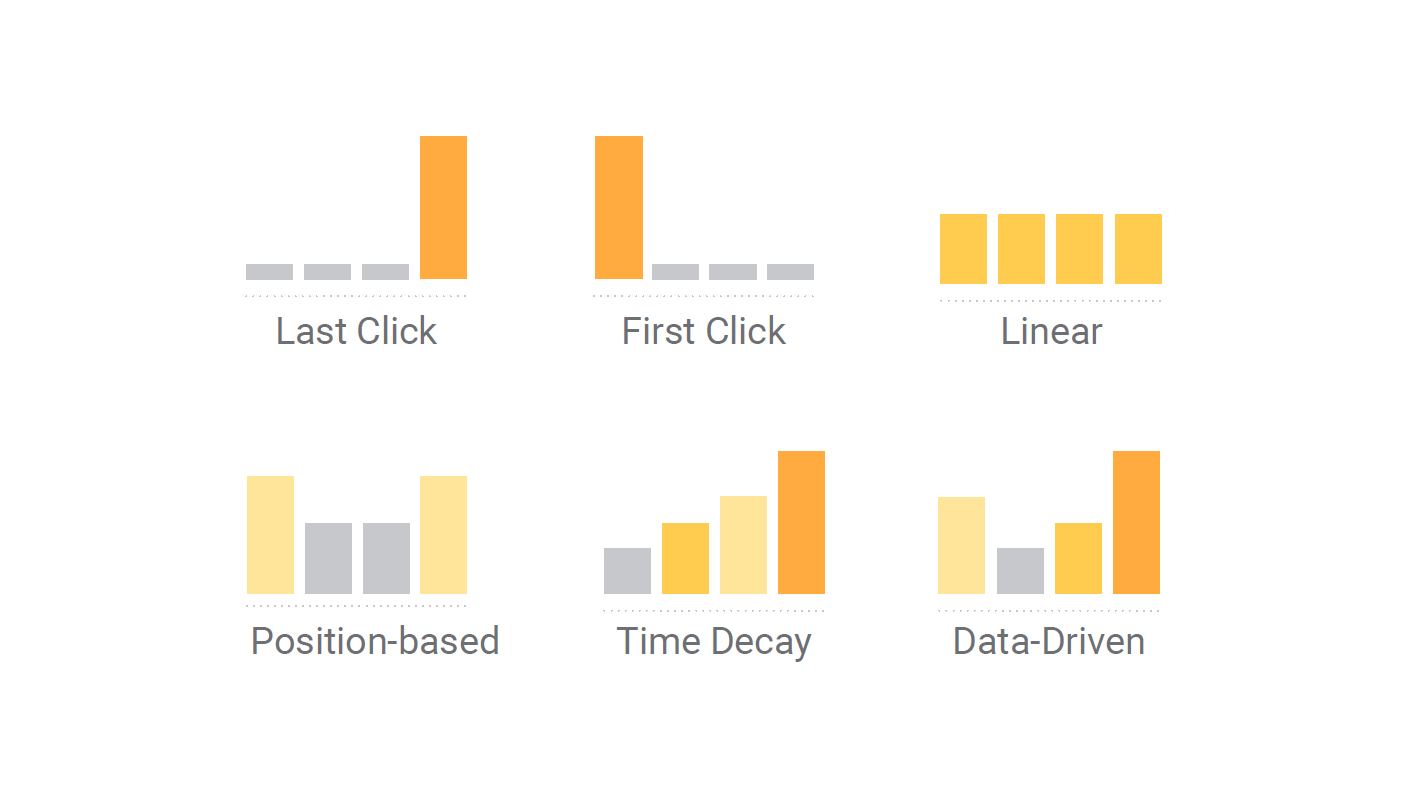Last click attribution is a relic of a bygone era, an era when the consumer journey was relatively simple. In the early days of Google a prospective customer might interact with a brand via one or two touchpoints before converting.
These days, the road to purchase is wildly different. According to a recent Google presentation, a ‘typical marketer uses 13 channels to drive his or her marketing objectives’. The number of touchpoints involved in a single transaction could be upwards of 30.
With so many touchpoints now playing a role in conversion, it’s no longer useful or fair to assign 100% credit to just one channel.
Why is attribution important?
Attribution is assigning credit for a transaction to a marketing touchpoint, or series of touchpoints. Getting attribution right is vital because it enables you to allocate accurate value to each of your marketing channels.
Without attribution - or an accurate method of attribution - you don’t know how valuable each of your marketing channels is. Consequently, it’s difficult to spend efficiently and optimise revenue, which is the ultimate aim of attribution.
A quick guide to attribution models
Last click has been the default attribution model for years, but multi-touch attribution models have been available for some time.

Many of these, though not “intelligent”, offer potentially more accurate attribution depending on what you know about the purchase journey of your customers.
First/Last Click - The last click attribution model assigns 100% credit to the touchpoint immediately before conversion. First click assigns it to the first touchpoint. Simple, but potentially misleading as a result, since the impact of all other activity is ignored.
Linear - As the name suggests, the linear model of attribution assigns equal credit across touchpoints. If four touchpoints played a part, then each would receive 25% of the credit.
Time Decay - In the time decay model, touchpoints closer in time to conversion are assigned greater credit. An interaction a week before conversion would receive significantly less credit than one occurring on the day of conversion.
Position Based - If you’re using position based attribution, no matter the number of touchpoints, the first and last receive 40% of credit, with the remainder shared between the others.
The future: data-driven attribution
There’s a new, more intelligent, kid in town. It’s called data-driven attribution, and it’s the model Google wants us all to use. And for good reason.
All of the attribution models described above are what’s known as ‘rules based’ models. That is, they essentially do what you tell them to. As its name suggests, the data-driven model is different, using machine learning to assign proper credit to each channel involved in conversion.
This new product works by assessing the impact each touchpoint in a user journey has on the ultimate conversion rate. The value of those that are found to have a greater impact is then upweighted, while the credit received by less important touchpoints is down weighted.
In Google’s own words:
“DDA is different from rules-based attribution models. It uses your account’s conversion data to calculate the actual contribution of each search ad click along the conversion path. By comparing the paths of customers who convert to those who don’t, DDA determines what truly matters for each conversion path.”
The beauty of data driven attribution is that it can be used, at the click of a button, to more effectively place spend, resulting in potentially higher conversion rates and, therefore, return on advertising spend.
*note that data-driven attribution isn't currently available to all. Within AdWords there is a data-based barrier to entry set at 15,000 clicks and a conversion action must have at least 600 conversions within 30 days.'
Conclusion
Data-driven attribution is the future. It goes beyond any of the previously available attribution models and is currently far and away the most accurate attribution model.
Even if you think last click attribution is sufficient for your marketing needs, moving over to the data-driven model is so painless that doing so is preferential. You never know, you might uncover something you didn’t know before.
For advice on moving over to data-driven attribution get in touch with the SearchStar team at hello@search-star.co.uk, or say hello on 01125 58 38 38.